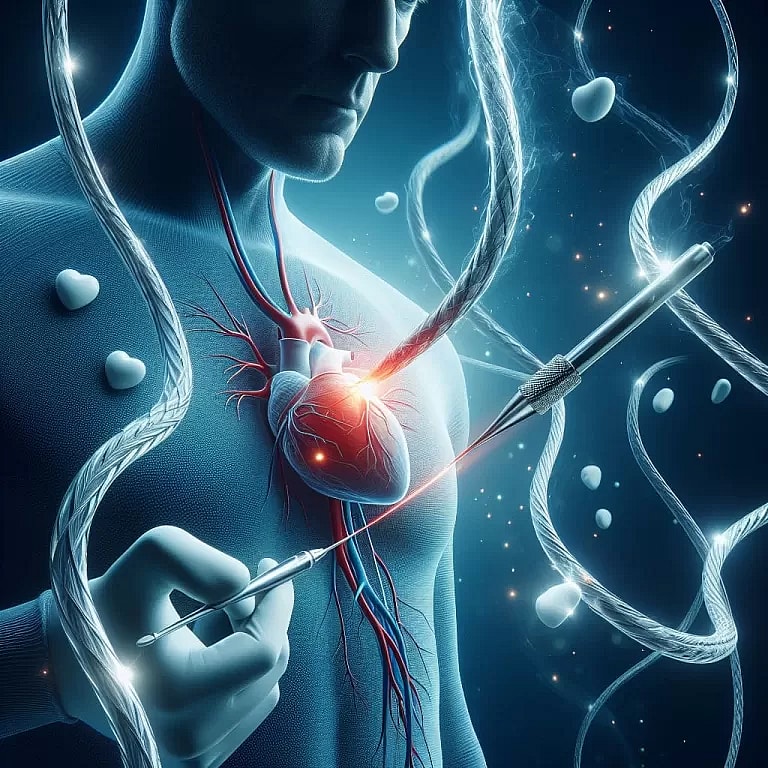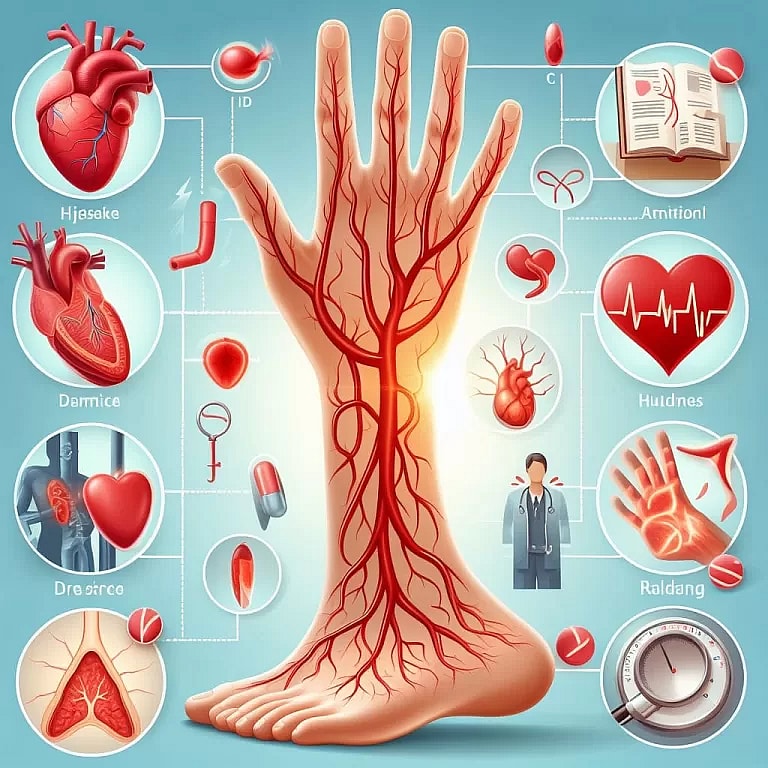What is Peripheral Vascular Disease?
[trp_language language=”en_US”]
Peripheral vascular disease
Peripheral vascular disease (PVD), also known as peripheral arterial disease, is a common condition in which there is a slow narrowing and hardening of the blood vessels in the legs. This causes poor blood flow and a lack of oxygen to the feet and legs. Smokers are mainly affected. Other risk factors are diabetes, high blood cholesterol, and high blood pressure. Typical symptoms are pain, numbness, paleness, burning, and heaviness of the legs. The diagnosis can often be made based on the symptoms and physical exam in a person who has risk factors for developing this condition. Treatment involves some lifestyle changes, getting reasonable control of other medical conditions, and if symptoms are severe, surgery. If this condition is not actively managed, the ongoing lack of oxygen can cause the tissues in the feet and leg to die, and in the worse case, this may require amputation.
Risks
Peripheral vascular disease is the medical term for blood vessels (arteries) that do not effectively transport blood to the legs. When a tissue (a substance that makes up the body) doesn’t get enough blood and oxygen, it is slow to heal after an injury and eventually dies. The most common cause for this is the formation of fatty collections in the blood vessels, which ultimately cause narrowing and slow or stop blood flow. These are more likely to form in people who smoke, do not take enough exercise, and have other medical conditions, especially diabetes, high blood pressure, and high cholesterol levels. This condition tends to affect people over 50 years of age and becomes slightly more common. Men tend to be more commonly affected than women.
Symptoms
Common symptoms include pain, paleness, burning, and heaviness of the legs or feet. These may start mild and worsen over time. Many people also experience a painful aching in the leg muscles while exercising, which improves with rest. Other symptoms may be a loss of the hair on the legs, difficulty feeling a pulse in the feet, and a blue or purple tinge to the skin. Erectile dysfunction may also be a symptom of this condition in men.
Diagnosis
The diagnosis is often suspected based on the symptoms and examination of the legs and hands, especially in people known to be at risk of developing this condition. An ultrasound that looks explicitly at blood flow through blood vessels is commonly done. In some cases, especially before surgery, a scan using dye to look at the blood vessels (an angiogram) closely may be done.
Treatment
Treatment of peripheral vascular disease involves lifestyle changes, other medical conditions, and sometimes surgery. Giving up smoking, eating a balanced diet, and taking regular exercise can help to stop peripheral vascular disease from getting worse. Getting reasonable control of other medical conditions, especially high blood pressure, high cholesterol, and diabetes, can also help to stop the progression of this disease and prevent the complications of this condition. If the condition is causing severe symptoms, surgery to bypass the blockage or remove the plaques may be needed.
Prevention
Giving up smoking, eating a balanced diet, and taking regular exercise can help to prevent this condition. People with medical conditions which increase the risk of peripheral vascular diseases, such as diabetes, high blood pressure, and high cholesterol levels, should aim for reasonable control of these conditions and have regular medical check-ups.
Other names for peripheral vascular disease
- Peripheral artery disease
[/trp_language]
[trp_language language=”ar”][wp_show_posts id=”6594″][/trp_language]
[trp_language language=”fr_FR”][wp_show_posts id=”6591″][/trp_language]
**What is Peripheral Vascular Disease (PVD)?**
**Q1: What is Peripheral Vascular Disease (PVD)?**
**A1:** Peripheral vascular disease (PVD) is a condition that affects the blood vessels outside the heart and brain. It occurs when these vessels become narrowed or blocked, restricting blood flow to the limbs, organs, and tissues.
**Q2: What causes PVD?**
**A2:** PVD is primarily caused by the buildup of plaque in the arteries. Plaque is a fatty substance that consists of cholesterol, calcium, and other materials. Risk factors for developing PVD include:
* Smoking
* High blood pressure
* High cholesterol
* Diabetes
* Obesity
* Physical inactivity
* Family history of PVD
**Q3: What are the symptoms of PVD?**
**A3:** Common symptoms of PVD include:
* Leg pain, cramping, numbness, or fatigue
* Coldness or discoloration of the limbs
* Slow-healing wounds on the feet or legs
* Pain when walking or exercising (claudication)
* Erectile dysfunction in men
**Q4: How is PVD diagnosed?**
**A4:** PVD is diagnosed through a physical examination, medical history, and diagnostic tests. These tests may include:
* Ankle-brachial index (ABI)
* Doppler ultrasound
* Angiogram
**Q5: How is PVD treated?**
**A5:** Treatment options for PVD aim to improve blood flow and relieve symptoms. They may include:
* Lifestyle modifications (e.g., quitting smoking, losing weight)
* Medications to lower blood pressure, cholesterol, or improve blood flow
* Angioplasty (widening the narrowed arteries)
* Stenting (inserting a device to keep the arteries open)
* Bypass surgery (creating a new pathway for blood to flow around a blockage)
**Q6: What are the potential complications of PVD?**
**A6:** Untreated PVD can lead to serious complications, including:
* Critical limb ischemia (severe pain and tissue loss in the limbs)
* Amputation
* Stroke
* Heart attack
**Q7: How can I prevent PVD?**
**A7:** To reduce your risk of developing PVD, follow these preventive measures:
* Quit smoking
* Maintain a healthy blood pressure
* Control cholesterol levels
* Manage diabetes
* Get regular exercise
* Maintain a healthy weight
* See your doctor for regular checkups








A great post on an important topic
A great post on an important topic